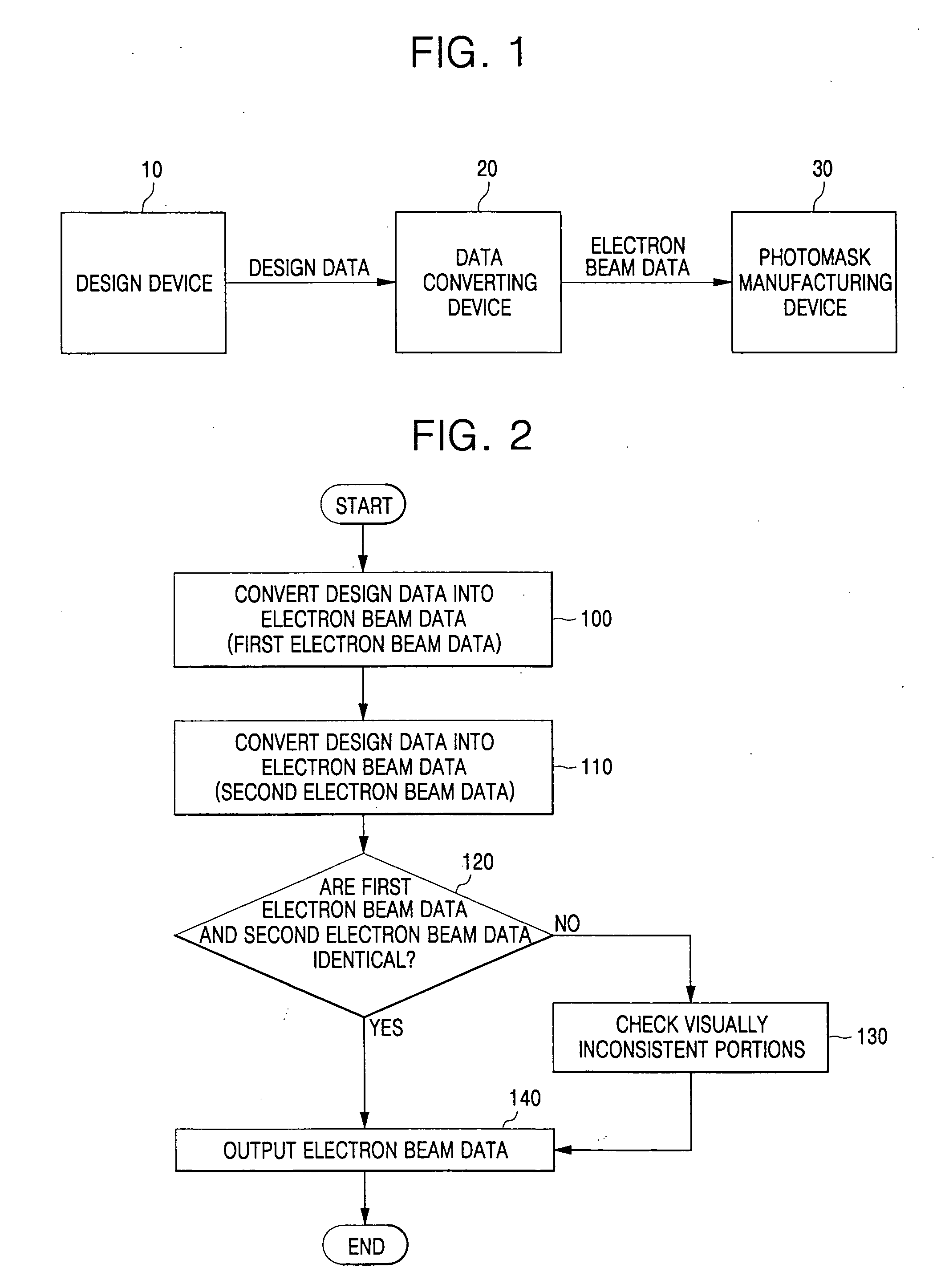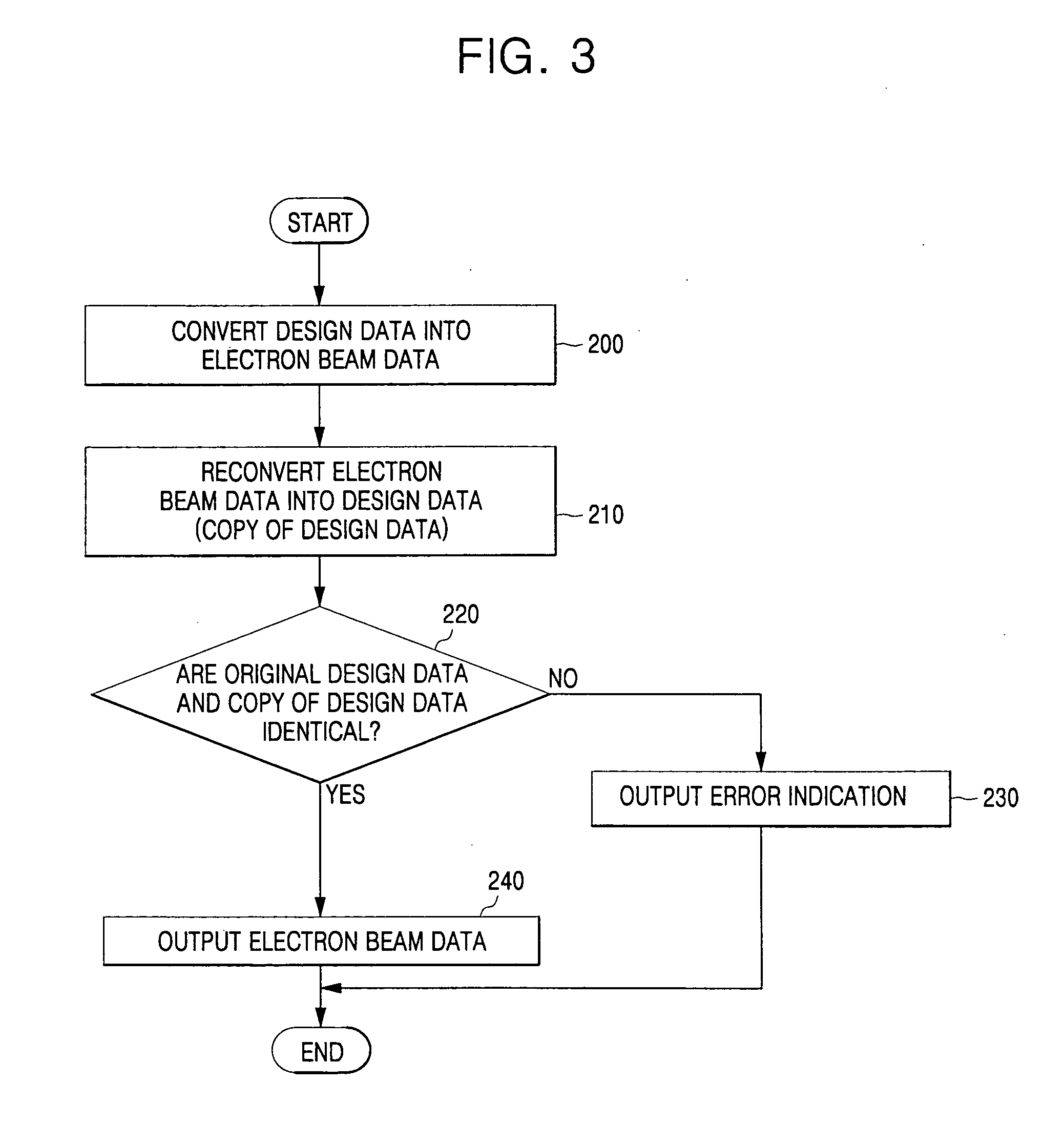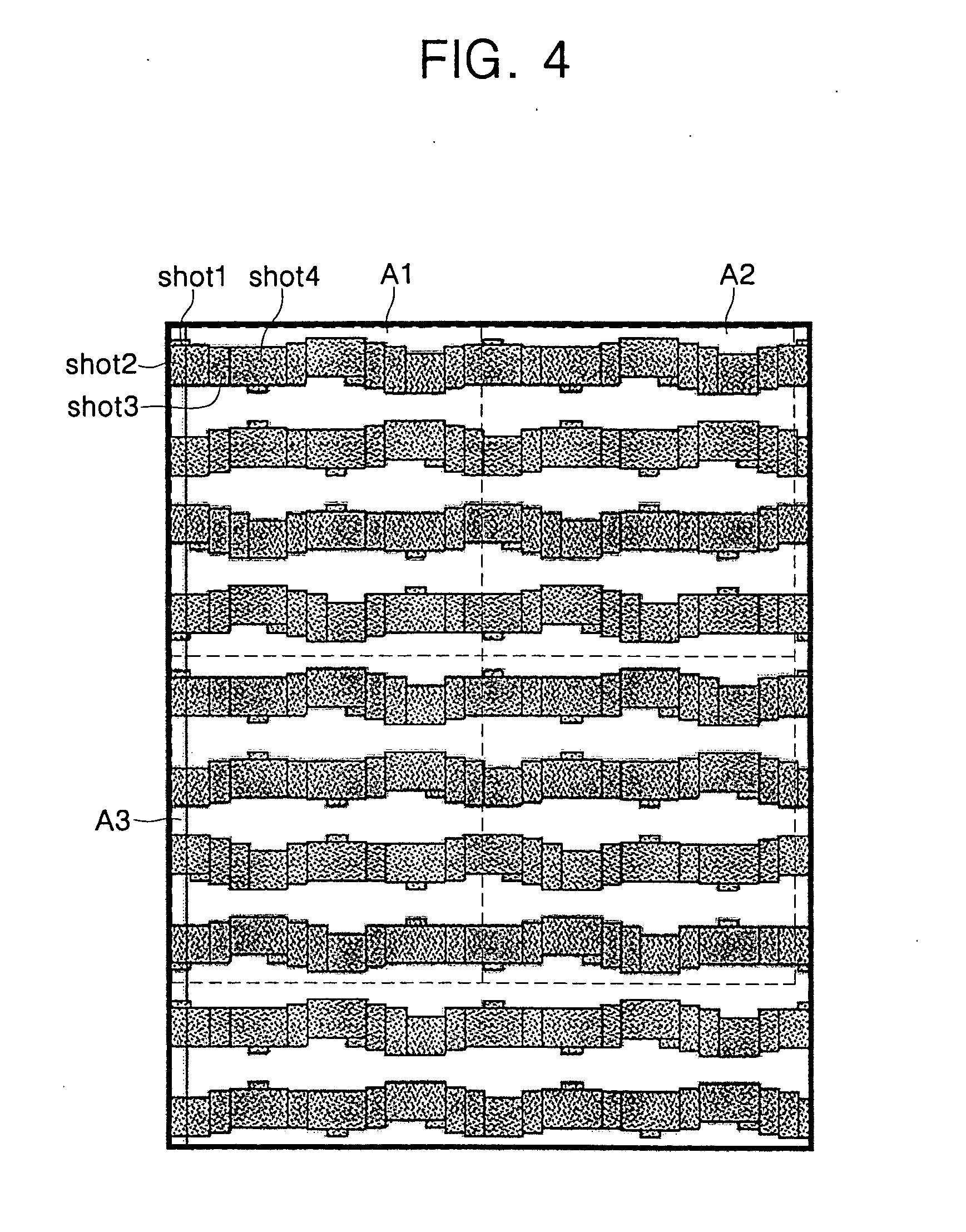Method of verifying electron beam data
a technology of electron beam data and electron beam data, which is applied in the field of electron beam data verification, can solve the problems of deformation of distorted electron beam data, and deformation of certain regions of design data,
- Summary
- Abstract
- Description
- Claims
- Application Information
AI Technical Summary
Problems solved by technology
Method used
Image
Examples
Embodiment Construction
[0035] Exemplary embodiments of the invention are described below with reference to the corresponding drawings. These embodiments are presented as teaching examples. The actual scope of the invention is defined by the claims that follow.
[0036]FIG. 4 is a diagram of electron beam data defining a pattern to be formed on a photomask. In FIG. 4, the electron beam data comprises a plurality of polygons (rectangles), each corresponding to a “shot” of an electron beam that will be applied to a blank photomask to form the pattern. The polygons are labeled in FIG. 4 as “shot1”, “shot2”, etc.
[0037] As seen in FIG. 4, the pattern comprises multiple repetitive regions, labeled A1 through A3 and delineated by broken lines. Repetitive regions frequently occur in electron beam data used to form photomasks for semiconductor devices characterized by repetitive elements. For example, a memory cell array of a semiconductor memory device typically comprises a plurality of memory cells arranged in a r...
PUM
| Property | Measurement | Unit |
|---|---|---|
| area | aaaaa | aaaaa |
| sizes | aaaaa | aaaaa |
| electron beam | aaaaa | aaaaa |
Abstract
Description
Claims
Application Information
 Login to View More
Login to View More - R&D
- Intellectual Property
- Life Sciences
- Materials
- Tech Scout
- Unparalleled Data Quality
- Higher Quality Content
- 60% Fewer Hallucinations
Browse by: Latest US Patents, China's latest patents, Technical Efficacy Thesaurus, Application Domain, Technology Topic, Popular Technical Reports.
© 2025 PatSnap. All rights reserved.Legal|Privacy policy|Modern Slavery Act Transparency Statement|Sitemap|About US| Contact US: help@patsnap.com



